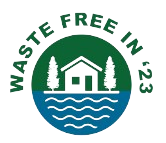Black Soldier Fly Biowaste Treatment – Assessment of Global Warming Potential (Mertenat, Diener & Zurbrügg, 2019)
Introduction
Managing organic waste is a growing challenge, especially in cities where food waste, market waste, and other organic materials pile up quickly. Traditional methods like composting or landfilling create environmental problems, including the release of greenhouse gases (GHGs) such as methane (CH₄) and nitrous oxide (N₂O), which contribute to global warming.
This study, conducted by Mertenat, Diener, and Zurbrügg (2019), examines Black Soldier Fly (BSF) biowaste treatment as a potential solution. The research assesses the global warming potential (GWP) of BSF treatment compared to composting, focusing on direct emissions, energy consumption, and waste residue management.
How Black Soldier Fly Treatment Works
BSF larvae consume organic waste rapidly, turning it into high-protein insect biomass, which can be processed into animal feed. The remaining waste, called residue, can be used as fertilizer or further processed. This system has two major benefits:
- Reduces the amount of waste going to landfills, cutting down methane emissions.
- Produces an alternative to fishmeal, reducing the need for overfishing and lowering environmental impact.
The study compares a BSF biowaste treatment facility in Indonesia with a traditional composting facility, measuring GHG emissions and global warming potential (GWP).
Key Findings: Environmental and Economic Benefits
1. Black Soldier Fly Treatment Produces Fewer Greenhouse Gases
- BSF treatment emitted 47 times less CO₂-equivalent emissions than composting per ton of waste.
- Composting releases high levels of methane (CH₄) and nitrous oxide (N₂O) due to slow decomposition.
- BSF larvae aerate the waste, preventing methane formation.
2. Global Warming Potential (GWP) is Much Lower with BSF Treatment
The study measured GWP per ton of waste processed and found:
- BSF Treatment: 35 kg CO₂-equivalent per ton of waste.
- Composting: 111 kg CO₂-equivalent per ton of waste.
This means composting has twice the environmental impact of BSF treatment.
3. Economic Benefits: A Sustainable Alternative to Fishmeal
BSF larvae can replace fishmeal in animal feed, which is expensive and contributes to overfishing. Producing BSF-based feed is:
- Cheaper than traditional feed sources.
- More sustainable, as it reduces reliance on wild-caught fish.
4. Energy Consumption Considerations
One challenge of BSF treatment is that it requires electricity for ventilation, lighting, and processing. However, this impact can be reduced by using renewable energy like solar power.
Conclusion: A Climate-Friendly Waste Treatment Alternative
This study concludes that BSF biowaste treatment is a more sustainable and low-emission alternative to composting. It helps reduce waste, lowers greenhouse gas emissions, and provides a valuable protein source for animal feed. To improve its impact, the researchers suggest:
- Better post-treatment options for waste residue.
- Scaling up BSF treatment using renewable energy sources.
- Government policies to encourage insect-based feed production.
Read the Full Study:
Mertenat, A., Diener, S., & Zurbrügg, C. (2019). Black Soldier Fly biowaste treatment – Assessment of global warming potential. Waste Management, 84, 173–181. https://doi.org/10.1016/j.wasman.2018.11.040
Got questions?
